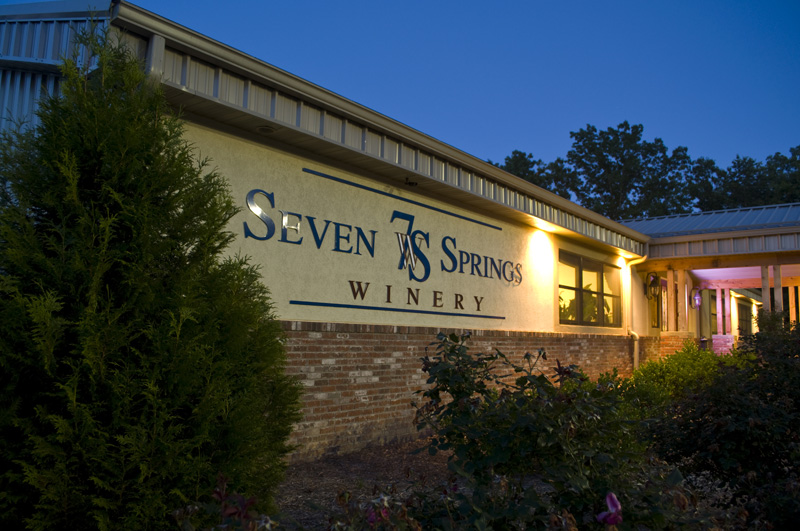‘Super’ Appellations: A View from Stone Hill Winery
This article by Danny Wood is part of a series looking at the idea of ‘super’ appellations in the Midwest. We’re bouncing around the idea of uniting parts of our region under a bigger appellation category according to grape variety, rather than terroir, and with strict quality controls. The aim is to help market the best Midwest wines in our region.
Many smaller wineries in our region rely heavily on their tasting rooms and staging events to make ends meet. With increasing numbers of wineries doing the same, can that be profitable for ever? Shouldn’t the focus be on growing local grapes and making quality wine?
Unlike wineries in California, Oregon and Washington, selling wine retail and in restaurants is often not an option for smaller wineries in the Midwest. With easy sales to be made from Californian and French wine, distributors generally aren’t very interested in our relatively unknown wines. Restaurants, despite the craze for local food, usually turn their noses up. “It’s all sweet or fruit wine isn’t it?” This refrain has been heard for many years and is dying hard.
Part of the problem, as everyone knows, is that it’s just very difficult for the emerging wine industries in our region to compete against the big guys from the likes of California, France, Italy, Australia and friends.
So why not team up? Why don’t Midwest states unite using ‘super’ appellations based on grape variety rather than terroir? This would enable the best wines from several states to use a common label designation, like Heartland Wine, for example. So Kansas, Missouri and Kentucky could designate Chambourcin, Norton and Vignoles as their ‘super’ appellation grapes and an independent panel could blind taste these wines to see if they were eligible for inclusion. Maybe Doug Frost could head the tasting panel?
See related story: ‘Super’ Appellations: A View From Minnesota
Midwest Wine Press put this super appellation idea to winemakers from across our region. The responses offer some provocative thoughts about the future of the wine industry in the Midwest. Here’s a view from Missouri:
Jon Held, Vice President, Stone Hill Winery, Hermann, Missouri
Stone Hill Winery is one of the most illustrious wineries in the Midwest. Founded in 1847, by the end of the 19th century (according to its website), it was the second biggest winery in the US, shipping 1,250,000 gallons of wine per year. The Held family rescued the winery from post-Prohibition oblivion, purchasing the property in 1965. Today, senior winemaker, Dave Johnson, is one of the most awarded winemakers in the country.
Jon Held said super appellations is an interesting idea and a good marketing concept, “but my understanding of the basic premise governing TTB guidelines concerning establishing AVA’s is that they have common factors with regard to geology, topography, soils, climate, etc. rather than varietal similarities.”
In response to the suggestion that Missouri, Kansas and Kentucky might team up and make Norton or Chambourcin under a super appellation, Held said, “I think it would diminish the perceived image of the Hermann and Augusta AVA’s since none of these areas are capable of growing as good a Norton or Chambourcin as in Hermann and Augusta.”
Stone Hill is one of Missouri’s biggest and most respected wineries and doesn’t have problems selling its wine outside its tasting room, in Missouri and in neighboring states like Kansas and Illinois. “I think we are seeing greatly increased awareness of our regional wines in these outlying markets,” said Held.
However, Stone Hill’s VP does agree that a growing number of wineries fighting over a limited number of potential tasting room visitors is a problem. He goes further and says the growing number of what he calls ‘faux wineries’ (establishments that are called wineries but don’t actually make their own wine) is threatening the local industry. “The real disservice to the legitimate wineries in the region are the folks who are bringing in their ‘1-800-dial—up-a” wine from California and pawning it off as locally produced wine.”
Another related issue, said Held, is the growing number of smaller wineries who have their wine made off-site at another winery in Missouri, that he doesn’t mention by name, but is Les Bourgeois Vineyards in Rocheport, Missouri. Last time I asked Les Bourgeois, they were producing wine for more than 30 Missouri wineries (including Belvoir Winery in Liberty, MO, where I work part-time).
Les Bourgeois also plays a leading role in the Missouri Wine and Grape Board’s (MWGB) efforts to educate and help wineries improve their wine quality. However does one winery making the wine for a lot of other wineries damage the local industry or raise the general quality of the wine? Are other wineries perhaps jealous of Les Bourgeois’ success in this regard? Held is unequivocal: “For the serious consumer of regional wine how much interest is there in a region in which probably half of the wineries are getting their wine from the same facility?” he said.
“It’s tough to build a serious, long term, regional wine industry with this going on,” added Held.
Rather than super appellations, Held and other industry leaders are focusing efforts on trying to change the rather misleading definition of a winery in the state of Missouri, or at least get the state wine organization – Missouri Wine -to acknowledge in marketing material that there are wineries and ‘wineries’ in the state. Currently, any establishment that has made a mere 200 gallons of wine on its premises can call itself a winery. It’s a peculiar definition. Held wants to move that definition closer to reality and also closer to what consumers expect. Perhaps, according to Midwest Wine Press, a new definition could be: If the wine you sell in your tasting room and elsewhere is made on the same property as your tasting room, you can call yourself a winery.
See: Super Applelations: A View From Minnesota



